Last Updated on February 25, 2024 by BiblioLifestyle
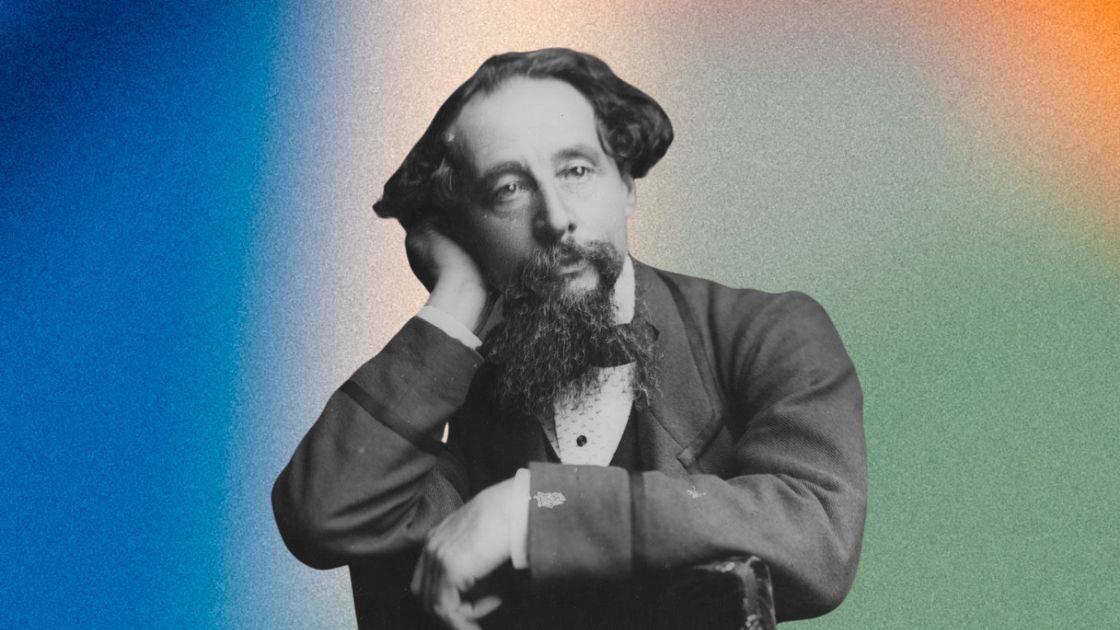
Undoubtedly, Charles Dickens is an iconic figure in the world of literature. Many people know his name, but what do we really know about the man behind the pen and paper? In this article, I am diving deep into the life of Charles Dickens to uncover the magic behind his enchanting stories and the life behind the man. So whether you are already a fan of his work or just starting to explore the world of Dickensian literature, this article is for you.
All About Charles Dickens
Charles John Huffam Dickens, an English novelist and social reformer, was born on February 7, 1812, in Portsmouth, Hampshire. Although Dickens’ early life was filled with financial struggles, he had a passion for writing. His most famous works include Oliver Twist, A Tale of Two Cities, Great Expectations, and David Copperfield, among others. His mastery of language and storytelling was well appreciated in his day, and many readers continue to enjoy and learn from his work.
The author’s personal life was often mirrored in his writings, exposing the social injustices and hardships faced by the common people during the Victorian Era. Charles had a unique ability to highlight social issues, bringing attention to them in a captivating and entertaining way. For instance, in Oliver Twist, he exposed the awful circumstances faced by orphaned children and how the poor were treated callously. Victorian society was prejudiced towards the working class, a class from which Dickens himself hailed. So through his writing, Dickens sought to give voice to the voiceless of society, thereby changing the status quo.
Dickens was a highly educated man who held strong moral values. He understood the power of the written word, often highlighting through his stories the importance of social responsibility, kindness, and compassion towards fellow men. His belief in social equity inspired many within the Victorian era and continues to inspire millions to live graciously and generously.
The Dickens Family
Charles Dickens was married to Catherine Thomson Hogarth, the daughter of George Hogarth, editor of the Evening Chronicle. They tied the knot on April 2, 1836, and over the course of their marriage, they had ten children together. Catherine was often in poor health, aggravated by her many pregnancies, but she still managed to publish a book of collected impressions of her travels across the country with Dickens. Unfortunately, their marriage ended in separation in 1858, largely due to Dickens’s relationship with a younger actress, Ellen Ternan.
Despite his marital issues, Dickens was a family man and loved the company of his children. Family was an important theme in his works, often depicted with idealistic warmth and charm. This was in stark contrast to the darker, more complex realities of his own familial experiences. Yet, Dickens’ writings would not be the same without his personal experiences, making his family an integral part of his life and career.
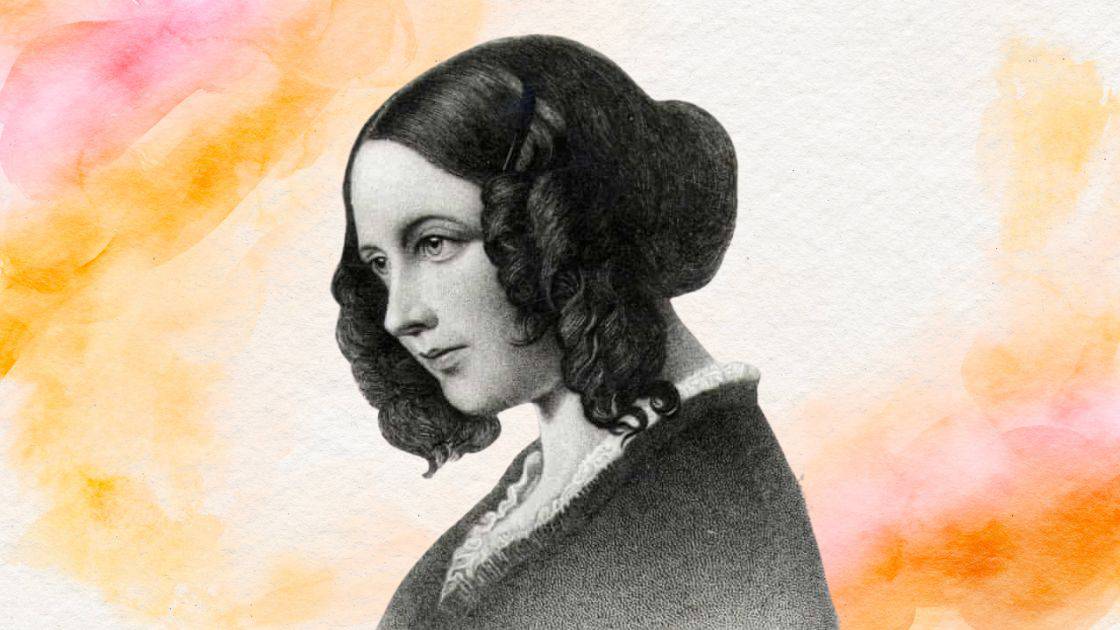
Catherine Dickens
Catherine Hogarth, later known as Catherine Dickens, was the wife of renowned author Charles Dickens. Born on May 19, 1815, in Edinburgh, Scotland, she was the eldest daughter of George Hogarth, a journalist and music critic. Catherine met Charles Dickens through her father, who worked with Dickens at the Evening Chronicle. The couple married on April 2, 1836, and over the course of their marriage, they had ten children. Catherine was often portrayed as a model wife and mother in Dickens’s public readings, and she even published a book of her own, ‘What Shall we Have for Dinner?’ which provided suggestions for dinner menus. However, their marriage was fraught with tension and difficulties. In 1858, after 22 years of marriage, Charles and Catherine separated. The separation was a scandalous event in the Victorian era, as divorces were rare and stigmatized. Her life and relationship with Dickens are often explored by biographers for insights into the personal life of the celebrated author but personally, I’m more interested in learning about Catherine and who was as a woman without the shadow of her husband.
The Dickens Children
Charles Dickens was a father to ten children. His first child, Charles Culliford Boz Dickens, was born in January 1837. He worked as a successful columnist and novelist and even became a Justice of the Peace. The second child, Mary Dickens, born in 1838, was particularly close to her father. She passed away at a young age which deeply affected Dickens. The third child, Kate Macready Dickens, born in 1839, was an artist. Alfred D’Orsay Tennyson Dickens, born in 1845, was named after his godfather, Alfred, Lord Tennyson. He spent a significant part of his life in Australia where he was committed to preserving his father’s legacy. The youngest of all, Edward Bulwer Lytton Dickens, also migrated to Australia and had a successful political career. Other children include Walter Landor Dickens, Francis Jeffrey Dickens, Sydney Smith Haldimand Dickens, Henry Fielding Dickens, and Dora Annie Dickens. Despite the challenges of having a large family, Dickens was deeply dedicated to his children, a trait that is reflected in the familial themes of his literary works.
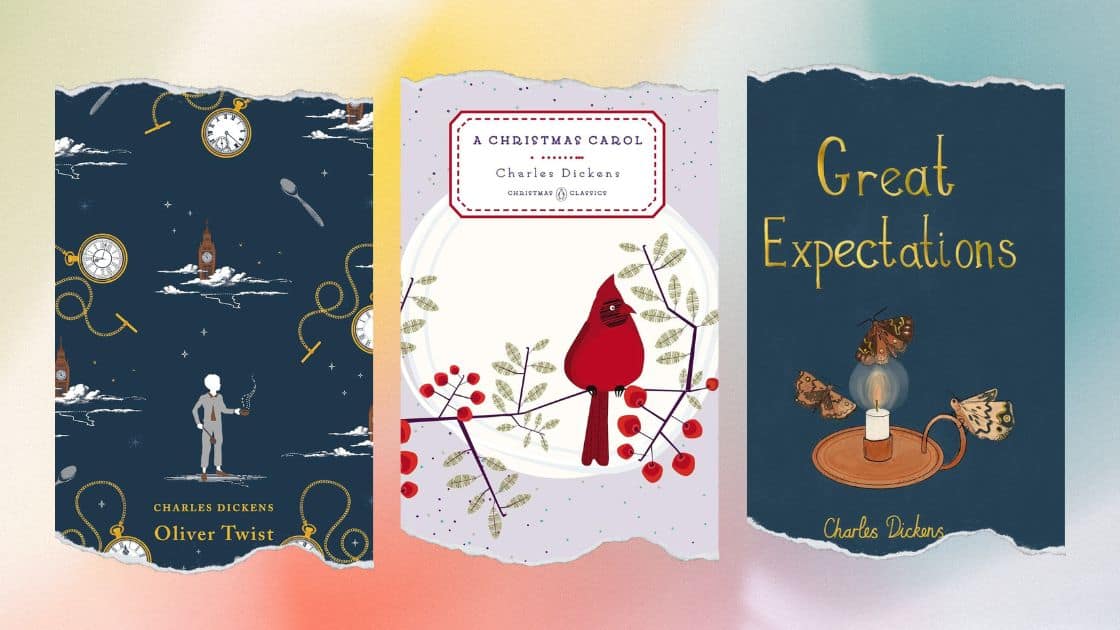
Charles Dickens Books
Charles Dickens’s books are renowned for their rich detail, memorable characters, and incisive social commentary. Each one provides a unique look into the different aspects of life in Victorian England, painting a vivid picture of the era. Over his lifetime, he wrote fifteen novels, five novellas, and countless short stories, essays, and articles.
CONTENT RELATED TO CHARLES DICKENS BOOKS:
- If you’re interested in reading Charles Dickens, but you’re not sure where to start, check out my “6 Must-Read Charles Dickens Books: Where To Start” article.
- If you’re looking for all of Charles Dicken’s works, check out my “Charles Dickens Books in Order with Summaries” article that has all his novels and noted novellas.
- Looking for contemporary books about Dickens? Check out Dickensian Tales: 7 Books about Charles Dickens
Charles Dickens Famous Books
Charles Dickens’ novels are renowned for their vivid storytelling, memorable characters, and insightful social commentary. The following are some of his most celebrated works:
- Oliver Twist: This novel follows the life of an orphan, Oliver, who experiences poverty and crime in London.
- A Tale of Two Cities: A historical novel set in London and Paris before and during the French Revolution.
- Great Expectations: The coming-of-age story of an orphan nicknamed Pip.
- David Copperfield: An autobiography of David Copperfield, focusing on his journey from childhood to maturity. (Also, this book has one of my favorite parties in classic literature)
- Bleak House: A novel that provides commentary on the British judiciary system.
- Hard Times: A critique of Victorian industrial society.
- The Pickwick Papers: Dickens’s first novel, illustrates the comic adventures of the members of a club.
- A Christmas Carol: A novella that tells the story of Ebenezer Scrooge, an old miser who is visited by the ghost of his former business partner Jacob Marley and the Spirits of Christmas Past, Present, and Yet to Come.
Each of these works reflects Dickens’s skill and passion for storytelling, making them timeless classics that continue to be loved by readers worldwide. They have also cemented Charles Dickens among the most renowned authors in literature, known for his insightful social commentary and memorable characters. Plus, his books have been adapted into countless films, television series, and stage productions, further cementing his legacy as one of the greatest writers in English literature.
Charles Dickens Short Stories
In addition to his novels, Charles Dickens wrote numerous short stories and essays that were published in various publications of the time. Some popular examples include:
- A Christmas Carol: Originally published as a novella, this story has become synonymous with the holiday season.
- The Cricket on the Hearth: A novella that tells the story of a household affected by the arrival of a cricket, believed to be a guardian angel.
- The Signal-Man: A short ghost story set in the Victorian railway system.
- A Child’s Dream of a Star: A heartwarming tale about siblings who are reunited in their dreams after one passes away.
- The Poor Relation’s Story: A comical story about a group of impoverished individuals who band together to support each other.
Charles Dickens’s short stories showcase his versatility as a writer, with works that range from humorous and heartwarming to dark and haunting. They also provide a glimpse into the societal issues and moral values prevalent during Victorian times. Despite their shorter length, these stories continue to captivate readers and serve as a testament to Dickens’s enduring literary talent.
Charles Dickens A Christmas Carol
Hands down, A Christmas Carol (Amazon or Bookshop) is arguably Charles Dickens’s most famous work. The novella tells the story of Ebenezer Scrooge, a miserly old man who is visited by three ghosts on Christmas Eve and is given a chance to redeem himself. It was first published in 1843 and has since become a beloved holiday classic, adapted into numerous films, stage productions, and even a Disney theme park attraction. The story’s enduring popularity is a testament to Dickens’s ability to blend heartwarming storytelling with social commentary, as well as his portrayal of timeless themes such as redemption, generosity, and the true meaning of Christmas.
If you’re looking for a classic Christmas book or story to read, check out my “Classic Christmas Stories that Will Leave You Feeling Festive” article.
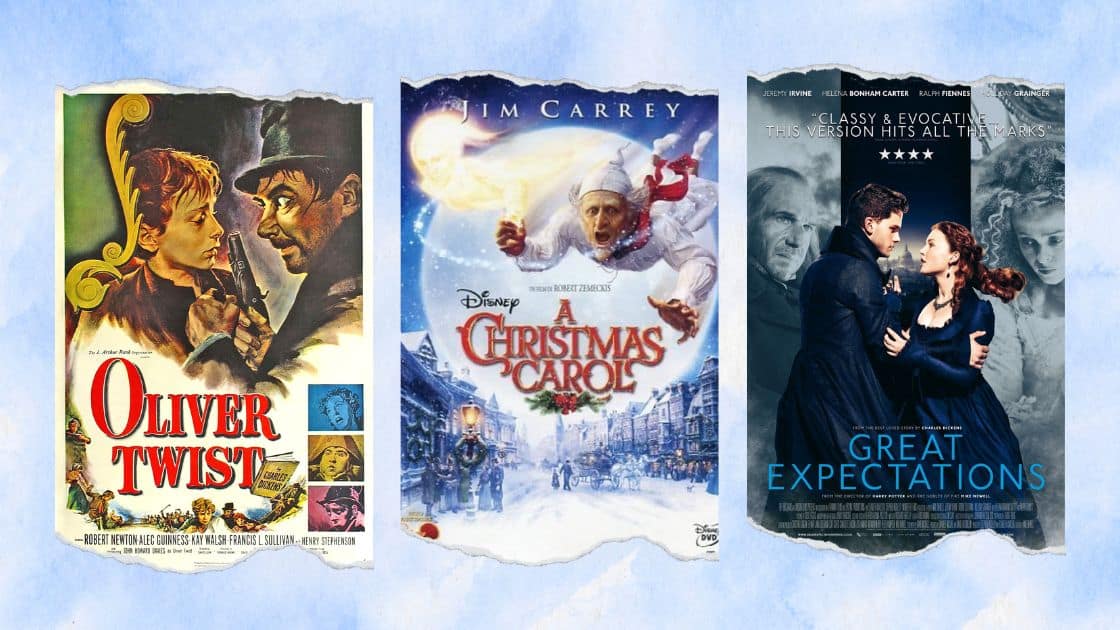
Charles Dickens Movies
Many of Charles Dickens’s novels have been adapted into films, television series, and stage productions. Some popular examples include:
- Oliver Twist (1948): A film adaptation directed by David Lean.
- A Tale of Two Cities (1958): A British film starring Dirk Bogarde and Dorothy Tutin.
- Great Expectations (2012): A modern adaptation directed by Mike Newell.
- David Copperfield (2000): A British TV movie starring Daniel Radcliffe as the young David Copperfield.
- Bleak House (1985): A BBC miniseries adapted from Dickens’s novel.
- A Christmas Carol (2009): An animated film featuring Jim Carrey as the voice of Ebenezer Scrooge.
These adaptations not only showcase the enduring popularity of Charles Dickens’s works but also serve as a testament to their timeless themes and universal appeal. They bring his stories to life in new and creative ways, introducing them to new audiences and keeping them relevant for generations to come.

Some Frequently Asked Questions
What was Charles Dickens most famous piece of work?
Charles Dickens’s most famous piece of work is arguably “A Christmas Carol,” first published in 1843. This novella tells the compelling story of Ebenezer Scrooge, a cold-hearted miser who undergoes a profound transformation after being visited by three ghosts on Christmas Eve. The tale, rich with themes of transformation, redemption, generosity, and the spirit of Christmas, has become synonymous with the holiday season and has been widely adapted into numerous films, stage productions, and television specials.
What are the 15 novels that Charles Dickens wrote?
- The Pickwick Papers
- Oliver Twist
- Nicholas Nickleby
- The Old Curiosity Shop
- Barnaby Rudge
- Martin Chuzzlewit
- Dombey and Son
- David Copperfield
- Bleak House
- Hard Times
- Little Dorrit
- A Tale of Two Cities
- Great Expectations
- Our Mutual Friend
- The Mystery of Edwin Drood
What did Charles Dickens write about?
Charles Dickens predominantly explored themes related to social inequality, poverty, and the plight of the marginalized in Victorian society. He often used his novels as a platform to critique harsh labor conditions, inadequate education systems, and systemic social issues of his time. Dickens had a talent for creating vivid characters and intricate plots, through which he illuminated the stark realities of Victorian England. Despite the often dark and serious themes of his work, Dickens’ rich humor, pathos, and unforgettable characters ensure his novels remain engaging and relatable to readers of all generations.
What happened to Charles Dickens when he was 12?
At the age of 12, Charles Dickens experienced a life-altering event that would later influence his work heavily. His father, John Dickens, was imprisoned for debt in the Marshalsea Debtor’s Prison. As a result, Charles was forced to leave school to work in a boot-blacking factory. This event exposed him to the harsh realities of child labor and poverty, shaping his socio-political outlook and fueling the themes of social reform in his literary works. His personal experience with the harsh realities of the Victorian Era’s brutal industrial economy is reflected in many of his novels, notably in “Oliver Twist” and “David Copperfield.” This experience also instilled in him a strong sense of empathy for the poor and marginalized, which is evident in his writing style and character development. Overall, this event played a significant role in shaping Charles Dickens’s literary career and perspective on social issues.
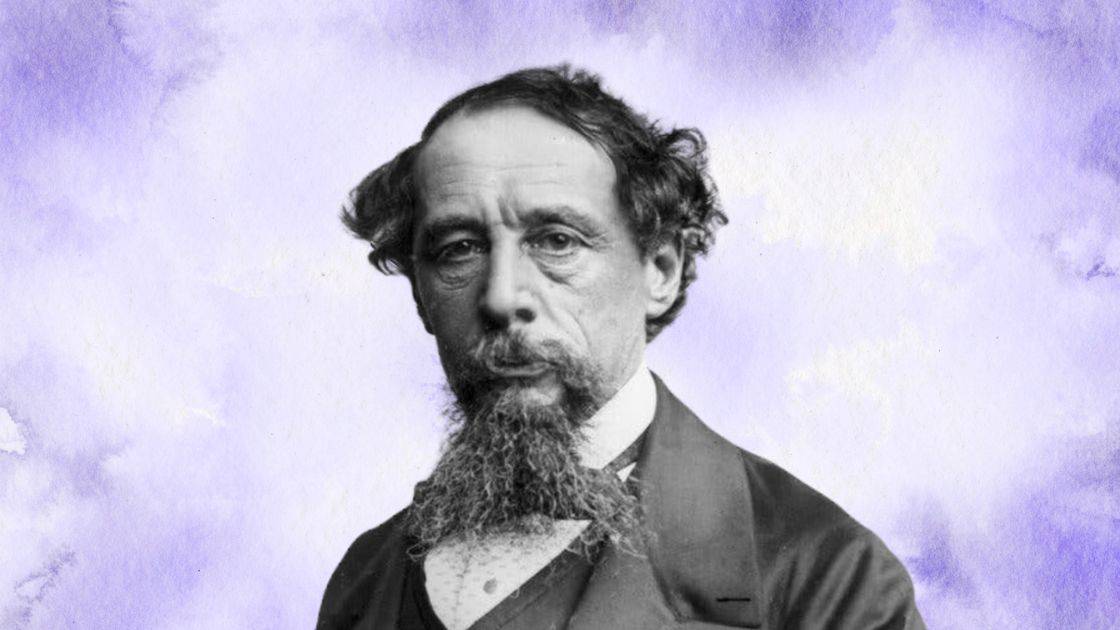
Charles Dickens Biography
Charles Dickens was born on February 7, 1812, in Portsmouth, England. He was the second of eight children to John and Elizabeth Dickens. His father’s job as a clerk in the Navy Pay Office afforded the family a comfortable living, but his financial mismanagement led to his imprisonment for debt in 1824. This event had a significant impact on young Dickens, who was forced to work in a factory to support the family. The hardships he faced during this time deeply influenced his literary works, many of which highlight the grim reality of the Victorian era’s social inequalities.
Dickens started his career as a writer with short stories and sketches, but it was the publication of ‘The Pickwick Papers’ that catapulted him to fame. Throughout his career, Dickens produced some of the most notable works in English literature, including “‘Oliver Twist,” “A Tale of Two Cities,” “Great Expectations,” and “A Christmas Carol.” His works are celebrated for their realistic portrayal of characters, biting social commentary, and masterful storytelling.
Despite his professional success, Dickens’s personal life was marked by marital discord and familial responsibilities. He separated from his wife Catherine in 1858 and maintained a long-standing relationship with actress Ellen Ternan. Dickens passed away on June 9, 1870, leaving behind a legacy as one of the greatest novelists of the Victorian era. His contributions to literature continue to be celebrated worldwide, and his works remain as relevant and influential as they were in his time.
In conclusion, Charles Dickens was a man well ahead of his time. His writing style grasped the issues of society with such scripted mastery that his work remains captivating to this day. Dickens’ iconic contribution to literature continues to hold readers captive – from the descriptive settings to the unforgettable cast of characters, his work has stood the test of time. It’s no wonder why he is still ranked amongst the most popular and influential writers ever to grace the literary world. Charles Dickens may be gone, but his impact on the literary world remains unchallenged. Let us, therefore, continue to revisit his novels to remind us of some of the universal truths of humanity – next time you pick up one of his novels, take a moment to pay homage to the man behind the pen – Charles Dickens.
Have you read any books by Charles Dickens?
What is your favorite Charles Dickens book? What Charles Dickens book is on your TBR? How much of his literary or personal life did you know? Let’s talk about all things Charles Dickens in the comments below!
RELATED CHARLES DICKENS CONTENT
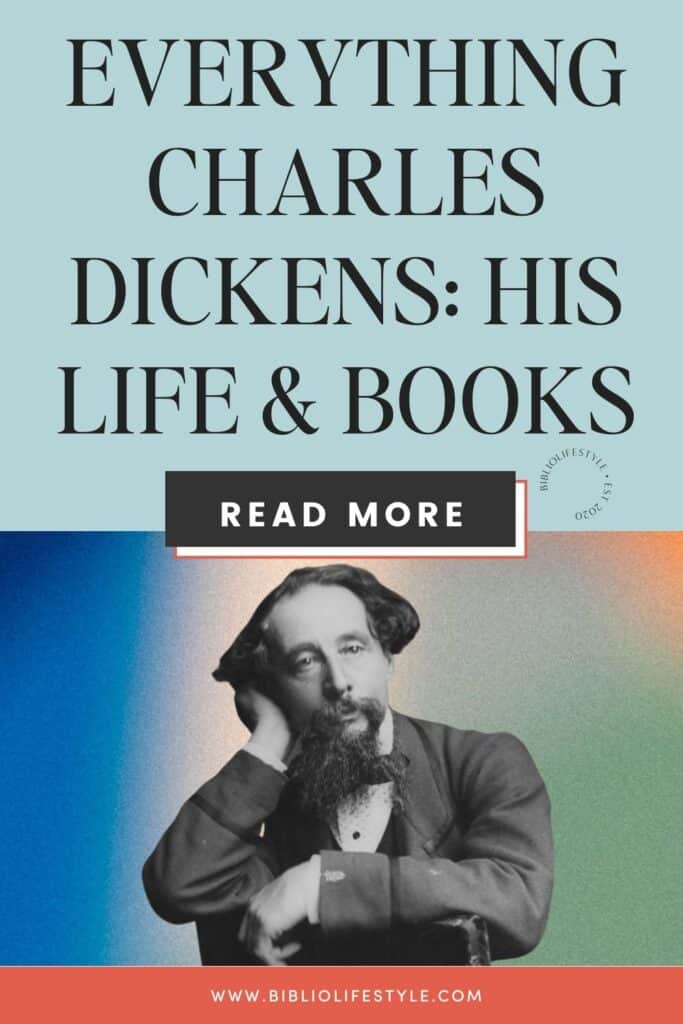



I love Chas. Dickens. This article is VERY interesting and I learned things about him I didn’t know.🙂 Second time reading this article. Didn’t leave comment first time. Thank You!!
Hi Eileen, thanks for sharing! I’m a big Charles Dickens fan and every time, especially around Christmas, I always read something from him.